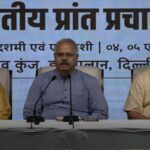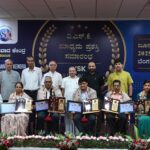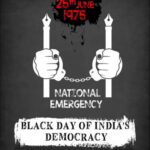OUR country’s greatest security threat is methodically expanding its spheres of influence into the traditionally unstable regions of troubled North-East. Latest analysis reports of the South Asian Intelligence Review published said: As per the report, CPI (Maoist) under a strategy to rope in sub-national armed grouping in the country’s periphery is widening its campaign for a pan–Bharatiya consolidation of violent anti – State movements.
The North-East frontier constitutes a strategic space for Left Wing Extremist (LWE) expansion. In May 2010, the Intelligence Bureau (IB) confirmed the LWE’s unfolding plans to reach out to other terrorist and separatist groups in the country including ULFA in Assam and Hurriyat Conference in J&K. The Maoists have started corresponding with them. The CPI (Maoist)’s Eastern Region Bureau (ERB) has been entrusted with the task of establishing a foothold in the North-East. The Maoists had already inked a three-point pact with the Manipur–based armed group – People’s Liberation Army (PLA) on 21.10.2008.
The pact has given the Maoists the initial logistic support needed in the North-East and subsequent indications suggest that this has been well exploited to secure wider alliance and deeper presence in the region. A China factor is visible in the growing Maoist linkage to the insurgencies in North-East. After the elimination of senior Maoist leader Cherikuri Rajkumar alias Azad in Jagapur forests on the Andhra Pradesh-Maharastra border on 2.7.2010 investigations have discovered a Chinese connection to Maoists. They (Maoists) have visited the Yunan province in South-West China bordering Myanmar and may have received some training there as well. The United Wa State Army (UWSA), Chinese speaking warring ethnic group in north Myanmar, has acted as a broker for Chinese produced arms as well as to sell weapons from their own arms factory near Panghsang bordering China.
A Jane’s Intelligence Review report in 2008 detailed UWSA’s involvement in trafficking weapons to Myanmar and Bharatiya insurgent groups – The ULFA, NSCN (IM), PLA and UNLF are harping on the need to have a good nexus with CPI (Maoist), insurgent groups of J&K and the North-East. The Maoist insurgents are now active in nearly a third of country’s territory and have unleashed violence in an alarming scale in their areas of disruptive dominance. Their expansion into the country’s North-East and their potential to reorganise and revitalise the degraded and fractious insurgencies of this region, would result in an exponential increase in New Delhi’s troubles. On the plea of plucking ‘Love Flower’, Chinese soldiers of People’s Liberation Army often sneak into Bharatiya territory in Arunachal Pradesh. There have been instances of sporadic intrusion in Bharatiya side by Chinese Army – PLA, when they meet locals or are challenged by security forces, they usually say they have entered Bharatiya territory to collect wild fungus from the mountains.
They call it “Love Flower” which is a fungus, called ‘Cordyceps Sinensis’ and costs Rs two lakh per kg in the international market. China is helping Maoists for increasingly investing their energies and experiences in consolidating their positions in the North-East and with the decline of ULFA, they are trying to champion the ‘repressed’ people’s causes. After the arrest of Maoist’s West Bengal secretary Sudip Chongdar alias Kanchan and three other top leaders, the Maoists have posted one of their politburo members in the North-East to spread their organisational base. Another senior Maoists politburo member and second-in-command of CPI (Maoist), Prasant Basu, is in charge of maintaining liason between Maoists and N-E militant outfits. Maoists began their foray in N-E by a memorandum of the understanding with PLA of Manipur a couple of years back, following which they tied up with two more Manipur based militants – Kangleipak Communists Party (KCP) and United National Liberation Front (UNLF). The Red rebels, who have graduated to terrorists, have come close to some mass-based organisations in this zone.
The arrest of Kanchan and three other top Maoist leaders is a direct fall out of the arrest of NSCN-IM’s foreign Secretary Anthony Shing in Nepal and UNLF Chairman Raj Kumar Meghan in Bihar. The manner in which Maoists are trying to ramify in the North-East are very disturbing because it holds the likelihood of another phase of terrorism in a region that has long suffered from the evil and made development impossible. Though most of the militant outfits are on a ceasefire mode, with the ULFA leadership too evincing interest in negotiations with the government, yet the real villain of the ULFA terror piece, its C-in-C Paresh Baruah is still a fugitive and recalcitrant about “sovereignty of Assam”.
Now it is the possibility of Baruah being left out with only a few of leaders and thus being forced to float a new terror outfit and Maoists launching their own Assam Chapter in tandem with other militants, that the security and Intelligence agencies ought to look into seriously to thwart a new gory chapter. Since Assam and of course the rest of north-east as well, has no dearth of unemployed and unemployable youth ready to join militant outfits as a career venture, there will be no dearth, too, of recruits for Maoists in this region. They will only more zealously contribute to the industry of terrorism which has stakeholder from the mainstream too, such as the unscrupulous among politicians, bureaucrats, police officers, businessmen, NGOs, Church, Islamic terrorists and ISI, etc. Since the industry of terrorism operates in the name of “insurgency” or “revolution” to “liberate” the different “repressed” people from the colonial group of New Delhi, there will also be no dearth of self-styled human rights groups to act as frontal wings of the new Maoists movement. The security intelligence grid must, then, remain alert. The region cannot be allowed to bleed further.
The nexus between the ULFA and the Maoists has come to the fore with the arrest of three Assamese youths including on ex-ULFA cadre by security officials during a recent encounter in the jungles of Odisha on 12.2.2010. Out of all the three Maoists one of them was identified as Aditya Bora an ex-ULFA cadre. The nexus has been exposed at a time when the ULFA central committee under the leadership of its Chairman Arbindo Rajkhowa is holding peace talks with the Centre even as the anti-talk faction led by Commander-in-Chief Paresh Baruah has launched a massive recruitment drive in Upper Assam. It is an established fact that the militant groups in N-E have strong links with other outfits both operating within and outside the country with whose help they procure weapons, route their funds and train their cadres.
The situation in Assam is fraught with ominous portents. It is apprehended that guns and black money could have an undesirable impact on the polls. The growing politician-criminal nexus lays credence to the popular belief that guns could indeed play a role in the election. The availability of illegal arms is bound to be huge given the long history of insurgency in the North-East. The regions strategic location sharing several international borders is also helping the illegal arms trade to flourish. In the past couple of years alone, over a thousand cases have been registered under the arms act in Assam alone testifying to the gravity of the situation. Active militants groups apart, absence of strict implementation of ceasefire ground rules with NSCN-IM, NSCN-K, ULFA, DHD(D), DHD(J), NDFB, BLT and others engaged in peace talks is also worsening the situation. Militants staying at designated camps and many of these who have surrendered are involved in the illegal arms trade.
The authorities need to be very strict with these elements in ensuring that they desist from such activities. Once a militant joins the mainstream, he must be made to respect the law of land. The slack enforcement of relevant rules concerning ceasefires or surrendered ultras has to be done away with immediately. Then, the licensing process for fire-arms needs to be made strict to prevent undeserving persons from possessing arms.
The existing mechanism for monitoring the status of legal arms has been far from effective with many licensed arms holders often found to be misusing their position and indulging in outright criminal activities. Not contented with all these anti-Bharat activities and flouting international rules China has stated that people of Arunachal Pradesh can visit China anywhere, anytime with any visa as their own country since Arunachal Pradesh is also the part of China. It may be recalled that China opposed the last Assembly election and registered its protest to Delhi and international community. China is also developing rail links in the border regions in Tibet Autonomous Region (TAR) including the proposed extension of the Qinghai Tibet Railway line up to Nyinchi.
The road, telecommunication and electric supply are being extended to bordering areas. Water supply, educational institutions, health and hygiene care and agriculture are being developed so that new villages can come up along with the existing area. The water current of Brahmaputra is planned to be diverted by constructing a dam on it. A few days backs Chinese air force and Pakistani air force had a joint war exercise which was first in the history. This side, the lethargy and complacence of Delhi is all-time high. Even impotents are some time seen showing their anger. But today’s Delhi leaders are all time cool, passive, dormant and vigourless. This inaction of Central Government is threatening the sovereignty of the country in the North-East.
Source: By Jagdamba Mall, Organiser







